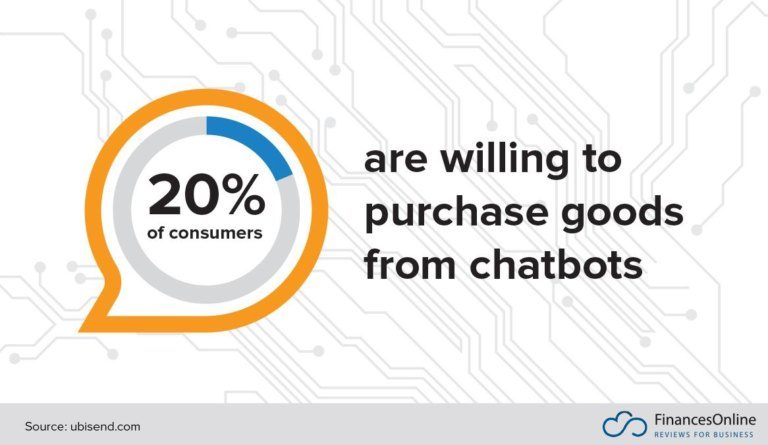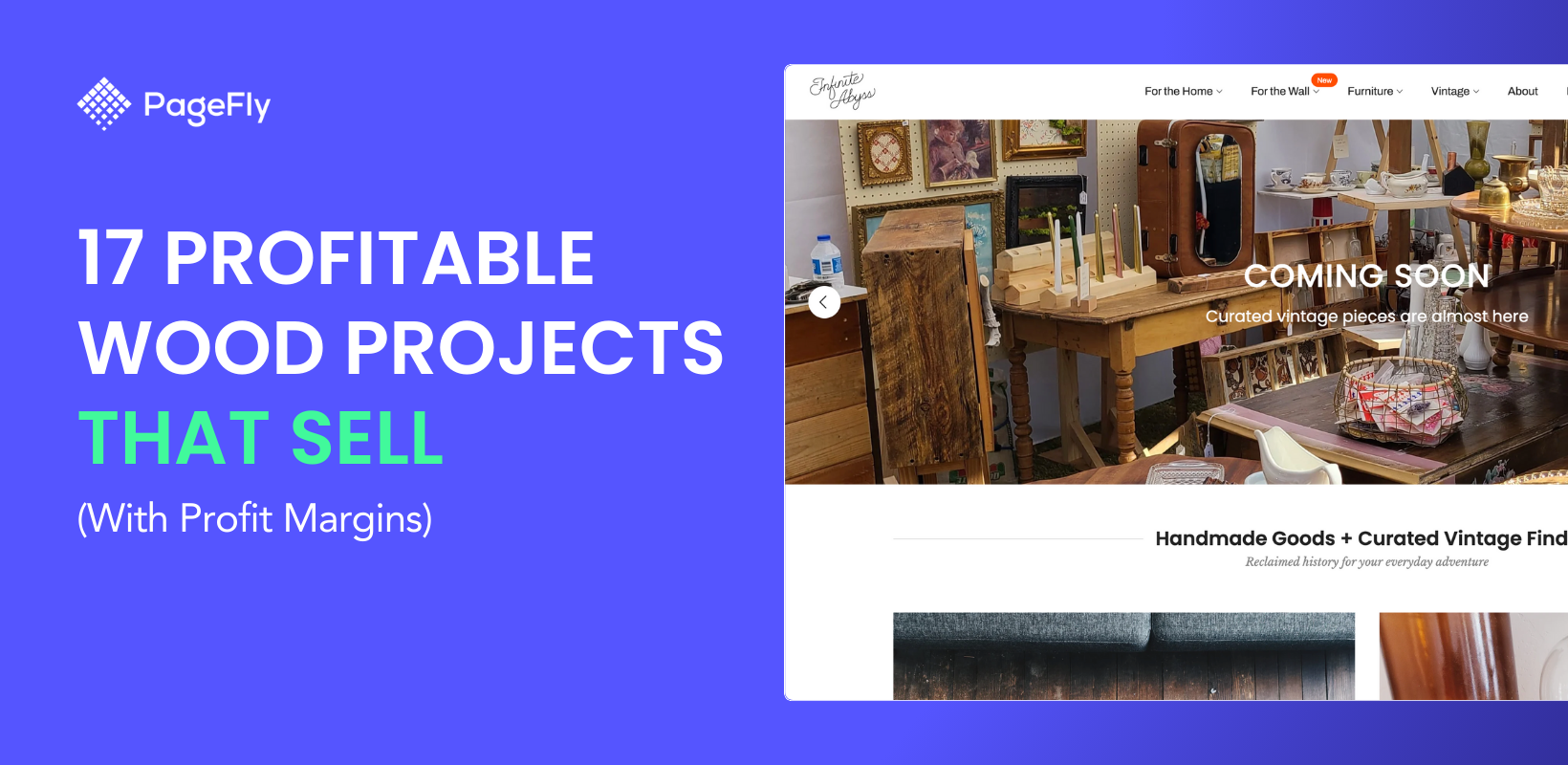Over the last few years, e-commerce has become an indispensable part of the global retail framework. Like many other industries, the retail landscape has undergone a substantial transformation following the advent of the internet, and thanks to the ongoing digitalization of modern life, consumers from virtually every country now profit from the perks of online transactions.
This report is created with the purpose of wrapping up all the ecommerce highlights and stats in 2021 then predicting the trends for 2022.
Outline
- 2021 Ecommerce Highlights (Data & Stats December 2021 Updated)
- Shopify Statistics 2021: Latest Impressive Facts & Figures Every Merchant Should Know
- Store Design Trends in 2022
- Textured backgrounds
- Light mode
- Micro animations
- Better filtering controls
- Live search
- App-like ecommerce features on mobile
- Faster page speeds
- One-page websites
- Ecommerce Marketing Trends in 2022
- One-Time Buyers Are the Challenge
- Online Selling Will Get Bigger
- Rise of Mobile Shopping
- Multichannel Personalization
- Better Payment Processing
- Voice Shopping to Take Centre Stage
- Omnichannel Selling
- Focus on Green Consumerism
- Social Commerce
- Increased AI Use in Ecommerce
- Conclusion
I. 2021 Ecommerce Highlights (Data & Stats December 2021 Updated)
01. Market Size
The number of digital buyers grows every year as internet access and adoption rise at a rapid pace around the world. Over two billion individuals purchased products or services online in 2020.

In 2021, the worldwide ecommerce market is anticipated to reach $4.89 trillion. As the global ecommerce market continues to develop year after year, this is a 14.3% growth from the prior year. This figure is expected to rise in the future years, indicating that borderless ecommerce is becoming a viable business model for online businesses.

With total online sales just around $2.8 trillion, China continues to lead the global ecommerce market. It also possesses the most digital buyers in the world, with 792.5 million, or 33.3 percent of the total. China is on track to become the first country in history to conduct more than half of its retail sales online, with ecommerce accounting for 52.1 percent of total retail sales.
The ecommerce market in the United States is expected to reach $843 billion in 2021, less than a third of China's. The United Kingdom is the third-largest ecommerce market after China and the United States. Total ecommerce sales in the UK are predicted to generate $169 billion, a small decrease from $180 billion in 2020.

The list of the five largest ecommerce markets is completed by two more Asian countries: South Korea is anticipated to expand 9.0% to $120.56 billion in ecommerce sales, while Japan is expected to rise 2.0 percent to $144.08 billion.
A movement in purchasing power from the United States and Europe to China and Southeast Asia has begun, fuelled by an increase in the number of Asian consumers getting access to eCommerce as their purchasing power and internet usage, particularly on mobile devices, grows.
02. Ecommerce Users Insights:
Demographics:
- There were 4.66 billion active internet users globally in January 2021, accounting for 59.5% of the total population. 92.6% (4.32 billion) of this number used mobile devices to access the internet.
- In general, the average Internet buyer is predominantly male between the ages of 25 and 49. According to a recent study by Affilinet, 84.3 percent of men shop online vs 77 percent of women.
- Overall, the number of internet users who purchase online is increasing, with the largest proportions reported in the 25-54 age group, closely followed by the 16-24 age group.
Characteristics:
- Younger buyers prefer to shop on their mobile devices.
- They solely use their smartphones to access the internet, not their computers.
Online Shopping Behaviours:
- Facebook, WhatsApp, Twitter, YouTube, Instagram and TikTok are the most popular social media networks.
- Credit cards are still the most popular way to pay.
- Shoppers utilize the internet to get ideas, compare costs, products, and features, and look for online reviews, opinions, and advice.
- The key routes for reaching internet shoppers include search engines, social networking, and email marketing.
- Due to COVID-19, 23% of shoppers claim they have begun to purchase online more frequently, implying that even more people would shop on mobile, and businesses should maximize their m-commerce experience.
- When COVID-19 struck in 2020-2021, buying habits did not remain intact. All markets and industries that fall behind in the development of online shopping platforms have been driven to accelerate their digital transformation. Consumers in 2021 want retailers to provide unique customer experiences in order to keep up with the rapid pace of digital evolution.
03. Product Categories Trends:

- Fashion is the most popular category of all internet purchases, according to the most recent statistics on the top online shopping categories. Consumers are expected to spend $759.5 billion on fashion-related products in 2021, accounting for 12% of overall eCommerce spending.
- Toys, hobbies, and DIY are the second most popular online shopping categories. These products are estimated to cost more than $590 billion. In 2021, spending in these two eCommerce sectors is expected to exceed $1.35 trillion, when combined with fashion-related products.
- Electronics and media are anticipated to be the third most popular online buying sector in 2021, with sales of $542.4 billion. Even perishables are becoming increasingly popular to sell online. This year, $468.5 billion is expected to be spent on food and personal care.
- The furniture and appliance sector ranks sixth on the list of top online shopping categories, with estimated revenues of $362.9 billion.

(source: Nielsen)
- Fortunately, Nielsen’s Connected Commerce report breaks down the most profitable internet industries by region. Aligning those verticals with your own gives you a good place to start when making big decisions.


04. Challenges:
- Language and Localization:
- When operating in a single country, language barriers are uncommon. Even if you're not a native speaker, the fact that you only have one language to master means you can focus all of your attention on it.
- Seventy-five percent want to buy things in their own language.
- Only 59 percent of people shop from English-only websites on a regular basis, if at all.
- 67 percent prefer navigation and content in their native tongue.
- Content and Cultural Perceptions:
- Even the most exact translations can lead to humiliating misunderstandings, such as KFC's catchphrase, "Finger-lickin' good," being mistranslated in China as "We'll eat your fingers off." Or when Ford's slogan, "Every car has a high-quality body," became "Every car has a high-quality corpse" in Belgium.
- Worse, diverse cultural standards and practices exist among different people's cultures. What is amusing or casual in one culture may be incomprehensible or even objectionable to those from other cultures.
- Technical Infrastructure and Speed:
- Most industrialized countries' infrastructure is quite consistent, so unless you choose a low-cost option, your visitors will experience steady uptime and loading speeds.
- Things drastically change when you relocate to another country. You'll quickly find that certain locations have substantially slower access if you use the same servers as a one-size-fits-all solution.
- Customers who are dissatisfied with the performance of a website are 79% less likely to buy from that website again.
- Pages should load in less than four seconds, according to 64% of smartphone users.
- A one-second delay in page load time results in an 11% drop in page views.
- Currency and Payment Preferences
- Converting prices to local currencies is a simple job that you may execute using your store's theme, customer-facing apps, or several storefronts.
- 92 percent of people prefer to shop and buy on websites that charge in their own currency.
- If the price is exclusively in US dollars, 33% of people are more likely to abandon a transaction.
- Brands looking to sell in these countries should customize the experience for each country, including currency, address fields, duties and tax calculations, promotions, returns policies, and country-specific communications.
- A seamless end-to-end shopper experience at every touchpoint is the key to success in the cross-border market. Providing this to customers, regardless of where they are in the world, will enhance brand loyalty and conversions.
II. Shopify Statistics 2021: Latest Impressive Facts & Figures Every Merchant Should Know
Shopify is one of the most widely used ecommerce platforms, but how big is it? How many people use it?
In this Shopify Statistics 2021 guide, you can see the most up-to-date and mind-blowing Shopify trends and facts, including sales, traffic, revenue, growth, and more.
01. Shopify Facts:
- Shopify was founded in Ottawa, Canada, in 2004 by three Canadians, inspired by a poor online shopping experience with snowboarding equipment. It currently has over 7,000 employees and contractors working for the company while over 700,000 are employed directly and indirectly in the partner community..
- It is among the most popular ecommerce platforms on the planet, with a 29 percent market share in the United States.
- In 2018, Shopify opened its first brick-and-mortar store in Los Angeles.
- Shopify was reported to be used by over 1,700,000 enterprises in around 175 countries as of May 2021.
- Shopify stores are also growing. On the Shopify platform, there are currently 1,658,775 active stores. In the third quarter of 2021, the number of Shopify stores grew by 72% year over year.

(source: storeleads)
- Affiliates can earn an average of $58 per user who signs up for a premium plan through Shopify's powerful affiliate network.
- Shop Pay Installments, which is exclusively powered by Affirm in the United States, provides merchants and shoppers with the best possible buy now, pay later experience, with merchants reporting a 28% drop in abandoned carts.

- Shopify is the first commerce platform to introduce organic product discovery and shopping tabs to TikTok with TikTok Shopping, assisting creators and merchants in deepening their interactions with consumers.
Shopify Markets becomes a new global commerce hub for merchants with all the tools needed for merchants to manage global commerce by default.

- For the first time, Shopify is collaborating directly with top ERP providers around the world, such as Microsoft Dynamics 365 Business Central, Oracle NetSuite, Infor, Acumatica, and Brightpearl, to assist high-volume merchants integrate ERP systems with commerce capabilities.
02. Shopify Usage Stats:
- With an installed app ratio of 25.8 million apps, 80 percent of third-party apps are used by Shopify merchants.
- Many well-known stores, including MyRaymond, Royalenfield, Pepsi, Tesla, Nestle, and Budweiser, as well as innovative brands like Gymshark, Hawkers, and Leesa and celebrities like Kanye West, use Shopify to create their stores.

The most-installed apps are Product reviews, Klaviyo, Mailchimp, Instafeed, Printful, Loox, Privy, Oberlo, Judge.me, and Messenger channel.

- 71.27% of domains are registered in the U.S, followed by the UK and Australia
- According to Shopify website data, there were about 2.3 million Shopify customers as of June 2021.
- Shopify receives 42.92 percent of their traffic from direct sources. Searches (26.75%), referrals (25.27%), social (2.68%), mail (2.06%), and display advertising account for the rest of the traffic (0.31%).
- The Shopify POS system was used by over 100,000 retailers as of June 2019, more than 100,000 merchants were using the Shopify POS system.
- When a product has a 3D product image rather than a flat image, customers are twice as likely to buy it.

03. Latest Shopify Sales & Traffic Stats:
- Shopify sees a 57% revenue increase as it rolls out new payment and shipping features.
- Email is Shopify's most effective referral marketing channel, bringing in 4.29% of all referral conversions . After that, search accounts for 3.04%, while direct marketing accounts for 2.93%, and social media accounts for 1.81%.

- The majority of traffic to Shopify stores comes from mobile devices, which account for roughly 79% of total traffic. In the third quarter of 2019, mobile devices accounted for 81% of traffic and 71% of orders on Shopify stores, up from 77% and 67% in 2018.
- In 2020, Shopify got over 58 million visits.
- The top-grossing Shopify businesses have annual revenues ranging from $7 billion to $11 billion.
- Shopify firms reported a 50% rise in online sales in 2019, compared to a 21 percent increase in the worldwide ecommerce sector.
- Over half of Shopify stores receive repeat purchases. It has been discovered that on average, a buyer purchases from the same store 3.8 times.

- According to current forecasts, Shopify's revenue in 2021 will surpass that of 2020, with $3.6 billion predicted by the end of the year. Fashion and apparel-focused Shopify stores are among the most popular.
- In 2020, gross profit increased by 78% to $1,541.5 million, up from $865.6 million in 2019.In fiscal year 2020, Shopify generated about $900 million in subscription solutions and nearly $2 billion in merchant solutions.

(Source: Builtwith)
- Current forecasts have Shopify exceeding 2020 revenues again in 2021 with upwards of $3.6 billion in revenue expected by year-end.
- 25 percent of Shopify’s recurring revenue comes from Shopify Plus.
- There were 457 million buyers on Shopify in 2020 – up from 218 million in 2018
- The majority of Shopify merchants are first-time business owners.
- The Shopify App Store contains approximately 6,600 apps.
- According to data, 87% of Shopify merchants consider apps to be essential to their business.
- There are over 100 free and paid-for Shopify themes available.
- Depending on the type of product and the amount of traffic you get on your Shopify website, you can make anywhere from $1,000 to $100,000 a month.
- On November 26, at 12:02 p.m. EST, Black Friday experienced the biggest shopping volume of the weekend, with peak sales of more than $3.1 million per minute.
Read more: How To Define “Sell This Now” Products To Dropship On Shopify
III. Store Design Trends in 2022
Online stores need to be competitive as ecommerce rises in popularity. As more customers turn to online stores for goods and services, ecommerce enterprises need websites that can keep up. The issue is that the ecommerce landscape is continuously evolving, so what worked well a year or two ago may suddenly seem inefficient and obsolete. Start by mastering these eCommerce Design Trends.
01. Textured backgrounds
People are spending more time online, not only for fun. They're also purchasing online more. Despite this, we'll witness a comeback of an ancient design trend: skeuomorphism. Or at least adapted for 2022. In the coming year, more ecommerce sites will incorporate real-world textures. Unlike the excessive use of wood grain panels in the early 2010s, new textures will be subtler and softer.
A great example of this can be seen on the FluxeAir website:

Consider this ecommerce design trend as a method to connect the digital and physical. Getting it right can help shoppers connect with the ecommerce brands they buy from.
02. Light mode
Dark mode has been a highly popular design style in recent years. But it will be less and less in 2022. Light mode designs will replace it. Consider white and neutral backgrounds.
The home page on Mr. Flower Florist & Gift is a nice example of this design trend in action:

There are still some darker components, although they are sparse compared to current dark mode designs. Like textured backdrops, light mode will add additional light and weightlessness to the online shopping experience. This is a welcome break for consumers who have spent the last year and a half looking at devices.
03. Micro animations
People are more comfortable doing more online, but they don't want to spend more time finding, researching, and buying items and services. Designers may help shoppers acquire what they need quickly by using micro animations.
On the Shop page of the Nion Beauty Store pre-built site, you can see an example of this:

Micro animations help shoppers find the store's interactive features. Particularly useful for product searches are hover effects. They can show more angles or versions of products. They can also provide shortcuts to actions like add-to-cart, share, and favorite.
These effects allow shoppers to compare products immediately from the product search page.
04. Better filtering controls
As the popularity of online shopping expands, so will the size of digital inventories. Customers will require a better way to navigate through all of the possibilities as businesses expand their product offerings – often with several lookalike products.
This is something that product filters already help with. By year 2022, on the other hand, is all about streamlining and improving the online purchasing experience. As a result, product filters will follow in the footsteps of contact forms, where each field is created precisely for the fastest input.
You can see this in the BeClothingStore pre-built site, which doesn't have a ton of options for each filter:

Filters, on the other hand, are precisely suited to the input type. The shopping and product filtering process will be considerably more intuitive as a result of this.
05. Live search
Shopify comes with a simple search function that you can include in the site's header. It's also possible to use it as an inside widget, such as in the ecommerce sidebar. With a huge ecommerce site, it's often not enough.
It's practical enough. The search bar is located in the top-right area of the website, which is where customers expect to find it. In addition, the search bar expands to give you more room to type.

Open a preview of the site after installing a pre-built site like Helas Jewelry and try searching for something.

It will then change your on-site search feature to something like this:

More sites will be created with a live search option in both the header and the product sidebar in the future year. Shoppers will be able to find the exact things they're looking for more rapidly as a result of this.
06. App-like ecommerce features on mobile
People have been hesitant to convert on mobile, despite the fact that the number of customers buying on their cellphones has long surpassed those on desktop. However, as more consumers rely on online stores, we'll see them becoming less hesitant to spend on their phones.
More ecommerce sites will be created with mobile app-like features in attempt to attract smartphone buyers to do so. Because consumers already spend the majority of their digital time in mobile apps, having this type of interface and functionality on a mobile site will make them feel more at ease.
On this updated version of the BeFlower 2 pre-built site, you can see an example of how this might look:
https://i7x7p5b7.stackpathcdn.com/codrops/wp-content/uploads/2021/10/8.mp4
Sticky elements, including headers, bottom bars, and floating buttons, are the simplest way to accomplish this.
The world has gotten used to apps, where interaction, animation, and dynamic experiences are the norm. The logical next step is bringing that energy to websites and creating more unique experiences there.
07. Faster page speeds
Mobile page speeds have become a highly crucial ranking criteria for websites because of Google's Core Web Vitals algorithm upgrade in 2021. As a result, designers will need to learn how to create lightning-fast websites in order for their ecommerce clients to rank well in search results.
While there are a number of technologies you can use to accomplish this — such as fast web hosting, a caching plugin, and so on - PageFly comes with a slew of optimizations right out of the box.
Design Your Own Shopify Store With No Limit
Fully Customizable. 100+ Templates and 50+ elements
Completely Free/ No Trial. Optimized for Fast Speed.
Websites that are highly optimized can increase conversions. You can test two versions of a web page using modern web technology to evaluate which performs better. A/B testing informs your marketing team on what performs best, allowing you to improve every aspect of your website over time. Changes in font, color, layout, size, and loading speed can all have an impact on your sales.
The Google Fonts "Load from Google" setting is one of the most essential optimization choices here. According to a case study conducted by KeyCDN a few years ago, fonts housed on Google's CDN load substantially faster than fonts hosted locally:

Consider this a competitive edge when it comes to eCommerce Design Trends because not every site designer will have access to such a performance-optimized tool.
08. One-page websites
Sometimes the simplest website is the most effective. We've noticed an increase in the popularity of one-page websites, which do away with menus and navigation in favor of easy scrolling. When the topic matter is narrower, such as a portfolio or the presentation of a single idea, one-page sites perform well.
These websites give you the impression that you're holding a flyer or reading a poster. You can evaluate all of the information you need in one spot, without having to navigate or search various pages.
Indi Harris' website (created by Jordan Hughes) is a digital resume. It allows the subject to be the center of attention. Because everything they need is right up front, a casual viewer is more inclined to read the complete CV.

With PageFly, you can stay ahead of design trends and customer expectations.
It's all about planning for the future when it comes to web design. The digital domain may be a showcase for new developments in animation, interaction, and total immersion every year because of its relationship with technology. And, as we'll see in the following web design trends, 2022 has a lot to look forward to.
IV. Ecommerce Marketing Trends in 2022
Learn more: Unfolding Recommerce (+5 Examples For Inspiration)
Are you looking for ways to improve your ecommerce website? Want to learn the key trends that will affect your online shop over the coming year?

01. One-Time Buyers Are the Challenge:
The pandemic has prompted a major shift in consumer behavior toward ecommerce. While this is good news for companies, they must be aware of new issues that may arise. The problem of one-time buyers is one of them. These are clients who a brand was able to attract once but couldn't keep or entice for subsequent transactions. As a result, it is more important than ever for online stores and brands to be more aggressive and proactive in retaining and building customer loyalty.

(source: Financesonline)
02. Online Selling Will Get Bigger:
Ecommerce is the most popular online activity, and it is rapidly rising. This popularity arises from the convenience and comfort that online shopping provides, driving an increasing number of consumers to forego in-person purchases in favor of making purchases online.

Websites today are more user-friendly, providing customers with the best online purchasing experience possible. Online shopping processes have also evolved, allowing customers to easily search and select the things they want while also allowing them to use a range of payment methods.

Furthermore, as a result of the pandemic, more people are opting to buy items online. Even grocery businesses are allowing customers to purchase groceries and other necessities via their websites or apps.
03. Rise of Mobile Shopping:
Another important ecommerce trend is the rise of mobile shopping. By the end of 2021, mobile commerce sales are expected to climb by 15%. Furthermore, mobile sales will account for 73% of all ecommerce transactions. It's simple to understand how significant mobile shopping will be to ecommerce organizations in the coming years just by looking at these numbers.


(source: Shopify)
Smartphones and tablets are becoming more powerful, and mobile shopping is becoming more popular. According to Ericsson's research, using a smartphone has the same cognitive functions and emotions as watching a horror movie or completing a math problem. Customers will not wait if your webshop is delayed; instead, they will find a way to meet their demands elsewhere.

(source: WakeupData)
04. Multichannel Personalization:
Personalizing consumer interactions has become ingrained in the selling process. Personalisation can, however, be used in a variety of ways. Consider combining this idea with multichannel selling. We all know that multichannel selling provides a wide range of chances for connecting with customers. But what if you could make it better by providing personalized service? Customer loyalty thus, as a result, repeat business can only improve as a result of this. Online sellers can improve their customer experience by employing automation provided by ecommerce solutions.

This type of setup ensures that each customer receives the same personalized brand experience regardless of the channel they use. This also guarantees that you only give relevant experiences to your customers, eliminating the need to bother them with irrelevant messages. Many marketers, on the other hand, have failed to adopt the concept, limiting their potential to provide a seamless personalized experience.

(source: WakeupData)
Personalization entails more than simply greeting each consumer who visits your website with "Hello, [firstname]!" Customers demand a consistent omnichannel experience across all channels, which necessitates personalisation. Luckily, you can provide each customer with a highly tailored and individualized experience using machine learning, smart website features, and online tracking technology. You could even be able to personalize things on a large scale to improve sales even further.
05. Better Payment Processing:
Payment processing, whether you like it or not, is an important component of any customer's journey and plays an important role in the conversion process. This is due to the fact that customers can choose to cancel a transaction at any time.
A deal isn't a deal until the cash register bell rings, in basic terms. So it doesn't matter if you've persuaded the customer to make the purchase. If a customer requires assistance throughout the checkout process, that prospective conversion can still be discarded.

Shopping abandonment is definitely real, and one of the most commonly cited reasons is a difficult checkout experience. If you want to make your online store more competitive, you should implement a simple checkout procedure with a variety of payment alternatives.
With the improvement of Shopify payments in 2021, In 2021, Shopify will be releasing the first APIs and technology that will allow partners and developers to create new subscription experiences directly within Shopify Checkout. You can create apps that support growing business models for retailers using the new Shopify Subscription APIs and Product Subscription App Extension.

(source: Shopify Plus)
Shop Pay checkouts are so convenient for customers that orders placed through them have a 1.72x greater checkout-to-order rate than purchases placed through normal checkouts. For mobile users, the rate rises even more—to 1.91x greater.
Read more: How to Create a Shopify Automatic Discounts For Your Store?
Here are a few more suggestions for how to optimize your webshop and make things easier:
- Order in 1 click
- Fast check-out
- Offer popular payment methods
- Saving the user’s data
- Buying directly on the product page
- Offer installments
- Price and duration of delivery visible

(source: Urban Planet)
06. Voice Shopping to Take Centre Stage:
In the United States, voice shopping has exploded and will continue to do so in the coming future. By 2022, the number of voice shoppers is predicted to rise by 55 percent. The launch of Amazon's smart speaker, Echo, fueled the expansion of voice shopping. Unlike online purchasing, voice shopping can be a little challenging for some. Customers describe the thing they want to buy, hence there are no images in this channel.

Also, consider using voice technologies like Alexa and Siri to allow customers to interact with your brand, get recommendations, and even make purchases.

Homeware, food, and low-cost electronics are among the most popular items purchased by voice shoppers. This tendency should be taken into account by online vendors, who should strive to provide clients with the comfort they require when voice shopping.
07. Omnichannel Selling:
It's time to get on board with multichannel marketing. Why? To begin with, customers have purchased from a variety of online retailers, including Amazon, branded stores, eBay, mom-and-pop stores, and, yes, even Facebook. Multichannel selling is projected to gain popularity among ecommerce businesses, who have been wary of the business model up to this point. This apprehension derives from the reality that multichannel selling is difficult to manage. Apps like BigCommerce can help you sell online quickly.

This trend is unavoidable because ecommerce businesses will inevitably expand, requiring inventory integration. As online merchants seek new platforms through which to reach new audiences, the development will be fueled by their push into new markets. With a lot of market exposure comes the chance to increase revenue.
08. Focus on Green Consumerism:
Many consumers claim to be influenced by environmental concerns while making purchases, therefore brands are expected to ride the green consumerism wave. The growing focus on environmental sustainability is a strong indication that online merchants must step up their game by implementing environmentally friendly methods.
Another thing driving green consumerism is the emergence of Millennials as a robust buyer group. Members of this generation are keen on demanding environment-friendly products. This demand for green products is steering ecommerce companies to adopt environmentally sound practices.

The terms "renewable" and "sustainable" aren't merely catchphrases. Renewable energy, sustainable environmental practices, and long-term sustainable thinking are becoming increasingly popular among consumers and governments. New ESG (environmental, social, and governance) preferences in the stock market have been driven by investors. Consumers also have a say with their money, and many favor companies that are committed to sustainability.

(source: Shopify)
Companies can achieve this by ensuring a greener online selling environment by purchasing products exclusively from fair-trade organizations.
09. Social Commerce:
The next rising trend is a subset of e-commerce, which is frequently used by D2C (Direct to Consumer) businesses with the purpose of keeping the entire shopping experience - finding the goods, making a decision, and checking out - in one location. It has its own set of advantages and disadvantages.

(source: Eagle Creek’s Instagram)
The majority of the benefits are in favor of the consumer, which is critical for the trend. Everything takes place on social media platforms (Facebook, Instagram, Pinterest, TikTok), where customers may read other people's evaluations or contact the seller directly before purchasing an item. Businesses that engage in social commerce are able to penetrate the daily lives of their customers, create stories, stimulate emotions, and obtain vital feedback.

Social media is no longer what it once was. It's no longer a way for people to communicate with one another. Brands can now broaden their target audiences by using social media as a marketing tool. "Buy buttons" have been added to platforms like Instagram and Facebook, allowing stores to sell through them. Customers can now make purchases through social media platforms, thanks to the establishment of links between online stores and social media networks.

The majority of social media networks have been geared toward internet buyers. But, more crucially, social media has evolved into a platform for brands to gain maximum visibility.
10. Increased AI Use in Ecommerce:
Artificial intelligence (AI) is increasingly being used by businesses to enhance their workflows and procedures. Ecommerce businesses are no different.
The need of merchants to create a personalized client experience is the main driver behind this trend. Customer service, sales, and marketing are among of the most well-known Al applications to date. However, the usage of Al is viewed as beneficial in areas such as forecasting and pricing.

By gathering data about your consumers, automating follow-up abandoned cart enquiries, and more, AI can help you develop a more effective sales process. Customers can be guided through the funnel by interacting with chatbots for simple questions.

The advantages of Al in the sales process are really promising. In this light, ecommerce businesses should think about investing in Al technology.
Conclusion:
The above ecommerce trends 2022 are intended to provide a clear picture of what the future holds for online selling. The data suggest that this selling platform has a bright future. Online selling has impacted a wide range of enterprises in several industries, transforming the way they function. Because of the advantages of ecommerce, businesses are scrambling to establish an online presence.
Organizations are adopting new technologies and business strategies in response to the latest ecommerce trends 2022, which are expected to enhance online sales. Never-before-heard concepts and even minor retailing challenges, such as better customer experience, multichannel selling, and green consumerism, are now front and center.
Companies should read and grasp the writing on the wall, given the massive changes that ecommerce is expected to take place. If you're an online seller or want to become one, keeping these trends in mind can help you sell more effectively online or perhaps build a successful online business. You will, however, need to make use of available technology to accomplish this. As a result, consider investing in the top ecommerce systems on the market.
PageFly's developers are continually pushing out essential updates, designing new pre-built templates, and providing designers with more innovative design tools – all to help you work quicker and smarter.









![14 Profitable Small Food Business Ideas for 2025 [Real Numbers]](http://pagefly.io/cdn/shop/articles/1_58b587d2-13db-4aa6-8c19-e40f5c88d3eb.jpg?v=1758255771&width=4460)
![Art Business Names: 350+ Ideas + Free Generator [2025 Updated]](http://pagefly.io/cdn/shop/articles/art_business_name_e94a54e9-d325-4ba3-94ab-7b4297952312.png?v=1760062968&width=1640)







